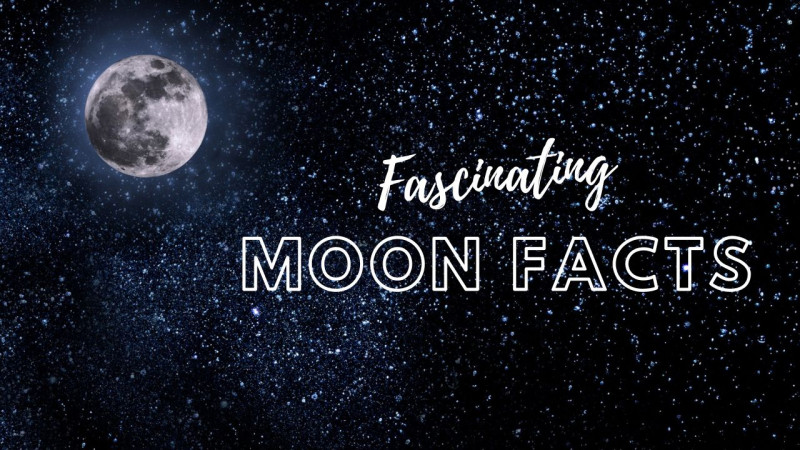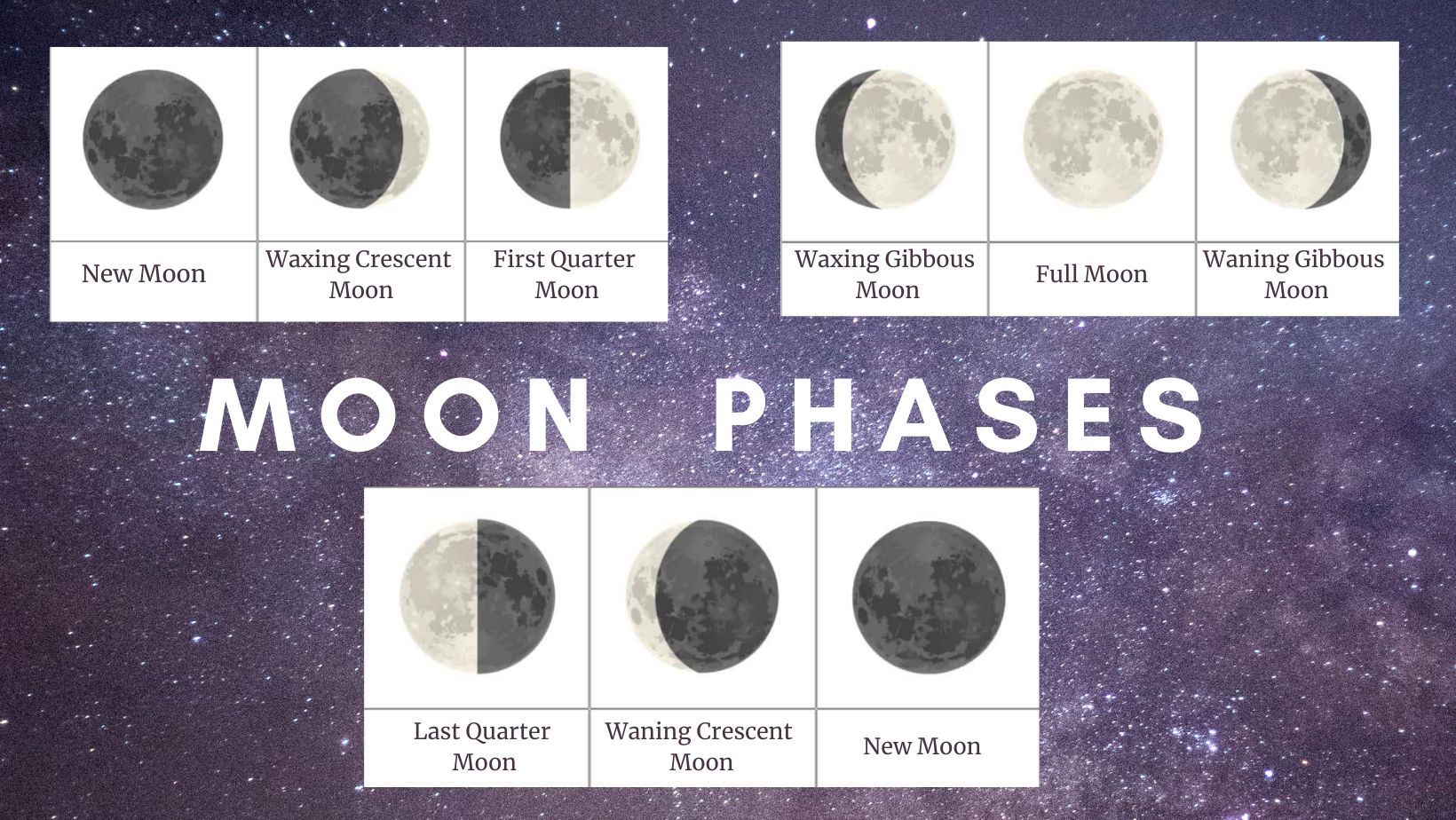
14 min
0
01.09.2024

The moon – that shimmering globe that decorates our night sky. Most college students have glanced upwards at it during a late-night study break or while walking across campus in the evening. But how much do you really know about our closest celestial neighbor? Delve into some fascinating and lesser-known moon facts that'll impress at your next late-night dorm chat.
- 10 Interesting Facts About The Moon
- The Phases of the Moon
- Lorem ipsum dolor sit amet, consectetur adipiscing elit. Fusce suscipit auctor nulla vitae aliquet. Phasellus vestibulum sem eget mauris euismod.
- The Dark Side of the Moon
- Beyond the Moon: The Cosmic Theater
- FAQ
10 Interesting Facts About The Moon
- Ancient Footprints: Let’s start with something familiar. We've all heard of the famous Apollo missions, where twelve astronauts set foot on the moon between 1969 and 1972. What's truly captivating is that, due to the moon’s lack of atmosphere and weather, the footprints of these astronauts, could remain visible for millions of years!
- The Moon is Drifting Away: It’s subtle, but it's happening. Each year, the moon moves approximately 3.8 cm away from Earth. This phenomenon is due to the transfer of Earth’s rotational energy to the moon, causing it to slowly spiral outwards. But don’t worry – at this rate, it would take billions of years for the moon to drift significantly away.
- Moonquakes? Yes, They Exist!: While the Moon may appear tranquil, it is not entirely devoid of activity. Similar to earthquakes on Earth, the moon experiences moonquakes. Some are deep and caused by tides, while others are shallow and mysterious, leaving scientists scratching their heads. The shallow moonquakes are the most intriguing, as they can last for more than 10 minutes – vastly longer than most Earthly quakes.
- The Moon's Size - Not So Mini After All: Ever thought about how big the Moon really is? The Moon has a diameter of approximately 2,159 miles. To put it into perspective, that's about one-quarter of Earth's diameter. Pretty impressive for a little moonlet, huh?
- Dust Like You Wouldn't Believe: The moon’s surface is covered in a fine, powdery dust called regolith. This isn't just any dust – it's incredibly sharp and abrasive, thanks to the lack of atmospheric weathering. This regolith is made up of tiny particles of rock and dust created by billions of years of meteoroid impacts. Astronauts during the Apollo missions noted that this dust clung to everything and could pose a risk to equipment and suits.
- Moon's Magnetic Mysteries: Earth has a strong magnetic field thanks to its molten core, but the moon’s magnetic field is weaker and patchy. The reason for this discrepancy remains one of the biggest lunar mysteries. Some theories suggest miniature "magnetospheres" scattered across the moon's surface.
- Water on the Moon: The thought of water on the moon was once considered science fiction, but recent missions have confirmed the presence of water ice in permanently shadowed craters. This discovery not only raises questions about the moon’s geological history but also opens up possibilities for future lunar bases. Imagine refueling spacecraft with lunar water!
- Unique Lunar Eclipses: While solar eclipses (where the moon obscures the sun) are more popularly known, lunar eclipses offer a unique spectacle. The moon doesn't have a shadow of its own, so during a lunar eclipse, it's Earth casting a shadow on the moon. This event paints the moon in a brilliant array of red and orange hues, aptly termed a "blood moon."
- The Moon’s Role in Romance: Beyond science, the moon plays a significant role in cultures worldwide. It’s a symbol of romance, mystique, and time. Its soft light has inspired countless poets, artists, and dreamy-eyed lovers.
- Lunar Birth Theory – A Collision Story: One prevailing theory about the moon's origin is the Giant Impact Hypothesis. It suggests that a Mars-sized body, called Theia, collided with the young Earth around 4.5 billion years ago. The debris from this colossal impact eventually coalesced to form the moon.
The Moon has captivated humans for centuries with its enchanting presence in the night sky. From its phases to its surface features, there is much to uncover about our celestial neighbor. Dive deeper into these moon fun facts and you'll find that our closest celestial neighbor is full of surprises, scientific curiosities, and cultural significance.
The Phases of the Moon

One of the most captivating aspects of the Moon is its ever-changing phases. The phases of the moon have been a subject of fascination for centuries. From ancient civilizations using its cyclical nature to set their calendars, to modern-day trends on platforms like TikTok, the changing face of the moon remains a captivating phenomenon.
What Causes the Moon Phases
The mesmerizing dance of shadow and light we observe as the moon's phases is due to its position relative to Earth and the Sun. As the moon orbits Earth, different parts of it are illuminated by the Sun. The portion that we see from our vantage point on Earth changes, resulting in the moon's phases. These moon phases facts unveil the enchanting science behind the moon's ever-shifting appearance.
Moon Phases Calendar
Before the advent of the modern Gregorian calendar, many cultures used the moon's phases to demarcate months. A moon phases calendar is based on the lunar cycle, which takes approximately 29.5 days to complete. This lunar month comprises the waxing and waning of the moon through various phases.
Moon Phases Diagram
For those of us who are visual learners, a moon phases diagram can be incredibly helpful. It typically illustrates the eight main phases: New Moon, Waxing Crescent, First Quarter, Waxing Gibbous, Full Moon, Waning Gibbous, Last Quarter, and Waning Crescent. This diagram provides an intuitive grasp of how the moon's appearance changes throughout a lunar month.
Moon Phases 2024
If you're curious about when to expect the next full moon or new moon in 2024, there are numerous moon phases calculators available online. These tools provide detailed insights about the exact dates and times of each phase for any given year, including 2024. With these at your fingertips, you can plan moonlit walks, stargazing nights, or perhaps align your TikTok content with the lunar phases!
Moon Phases Calculator
Whether you're an amateur astronomer, a curious student, or someone planning a special date night under the stars, a moon phases calculator can be a valuable tool. By inputting a specific date or month, these calculators provide a snapshot of the moon's phase, helping predict its appearance in the night sky.
Moon Phases TikTok Trend
Social media platforms, especially TikTok, have played a pivotal role in popularizing a myriad of topics, and moon phases aren't left out. Users put an image of the moon phase on the day they were born on top of an image of the moon phase on the day their partner was born. The trend says that you are more likely to be "soulmates" if your moon phases are similar.
In weaving together the worlds of science, technology, and popular culture, the moon phases embody a unique blend of age-old wonder and modern fascination. So, whether you're referencing the moon phases of 2024 for academic purposes, joining the moon phases TikTok trend, or simply gazing up at the night sky in contemplation, there's always something new to discover about our celestial companion.
The Dark Side of the Moon
No, no, we're not talking about Pink Floyd here (although their music is pretty stellar too). We're talking about the mysterious dark side of the Moon. Contrary to popular belief, it doesn't mean that this side is perpetually shrouded in darkness.
The term "dark side of the moon" is a misnomer. While it’s true that one side of the moon never faces Earth due to tidal locking, it doesn’t mean it's always dark. Both sides of the moon receive equal sunlight; we just never see the far side from our vantage point.
Mission Chandrayaan-3
India's Chandrayaan-3 mission successfully landed on the moon on August 23, 2023, making it the world's fourth moon landing and and the first to do so on the moon's dark side.
Researching the Moon's southernmost region:
Due to its mysteriousness, the Moon's South Pole attracts a lot of scientific attention. Craters that are always in the shade may be habitable because they contain water ice.
Due to the lack of an atmosphere, the South Pole of the Moon is extremely cold, with temperatures as low as -414F (-248C), making it possible for water ice to exist there. In 2008, Chandrayaan-1 discovered what it believed to be water on the Moon.
NASA's Lunar Reconnaissance Orbiter found evidence of water ice on the moon.
Practical uses for water on future human missions include being used as both drinking water and rocket fuel. For future lunar missions, however, knowing how easily accessible and mineable this water is is crucial.
Importance:
- The history of the solar system may be able to be deduced from the chemical composition of polar water.
- Possibility of using solar energy at the moon's south pole.
- There is geological significance to a large impact crater near the lunar south pole.
- Different lighting and temperatures at the lunar poles provide unique opportunities for discovery.
Plans for Future Moon Trips:
- On August 26th, Japan plans to launch its intelligent lander (the SLIM mission).
- The Artemis program at NASA is working toward a series of lunar missions.
- By 2026, India and Japan hope to have launched their joint Lunar Polar Exploration (LuPEX) mission into the Moon's shadowed regions, also known as the "dark side."
The moon is not just a nightly ornament; it's a treasure trove of mysteries, stories, and scientific wonders. As college students, the next time you pull an all-nighter, step outside for a moment. Take a look up and marvel at the rich tapestry of history and enigmas that our moon offers. And remember, just like the moon has its phases, so too does college life – with its own set of challenges, wonders, and moments worth cherishing.
Beyond the Moon: The Cosmic Theater
While the moon dominates our night skies and captivates our imagination, it's essential to remember that it's just one act in a vast cosmic theater. When you gaze up at the night, you're not just witnessing the moon's glow but a whole universe of wonders.
- Planetary Neighbors: On a clear night, several planets from our solar system are visible to the naked eye. Venus, often referred to as the "Evening Star" or "Morning Star", shines with a bright, steady light. Jupiter, the solar system's largest planet, is also quite bright and easy to spot. Mars, with its reddish tint, and Saturn, with its stunning rings (though you'll need a telescope to see them), also make appearances.
- Shooting Stars and Meteor Showers: These fleeting streaks of light are tiny space debris burning up as they enter Earth's atmosphere. During certain times of the year, meteor showers, like the Perseids or the Geminids, grace our skies, offering a spectacle of dozens of meteors each hour.
- Wandering Comets: Every once in a while, a bright comet with a distinctive tail might be visible. Comets are icy bodies that release gas and dust when they get close to the sun, creating a glowing coma and often a tail.
- The Milky Way: Away from city lights, the soft, milky band of our galaxy stretches across the sky. This band consists of the combined light from billions of distant stars.
- Stellar Constellations: Over the millennia, humans have identified patterns in the stars, creating constellations. These star patterns have been woven into our myths, legends, and stories, and they have guided travelers for centuries.
- The Dance of Satellites: In addition to natural celestial phenomena, the sharp-eyed observer can often spot satellites, including the International Space Station, as they orbit our planet.
So, as you admire the moon and its beauty, remember that it's a gateway to the broader universe. The night sky is a canvas painted with tales of exploration, science, and wonder. Every point of light has its story, and each night offers a new chapter in the cosmic narrative.
FAQ
Why does the moon appear larger on the horizon than when it's high in the sky?
Why is the full moon myth so prevalent?
Does the full moon affect sleep patterns?
Is there a connection between the phases of the moon and "lunacy"?



